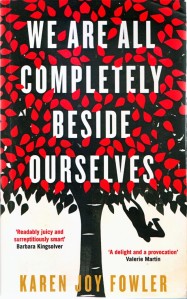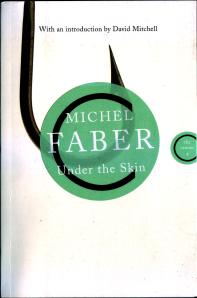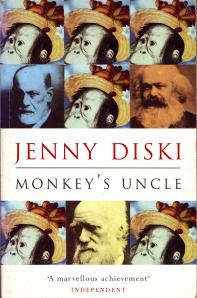
More than ever before, authors are writing stories featuring authors – whether it’s called autofiction, memoir, metafiction etc. Is this a symptom of a self-obsessed culture? It’s nothing new: James Joyce did it in A Portrait of the Artist as a Young Man (1916), ditto Sylvia Plath in The Bell Jar (1963) and Stephen King in Misery (1987). Joyce attacked religion, Plath critiqued patriarchy, and King had fun with addiction and insanity. But today, more readers than ever before are writing – and who doesn’t want to read about their own field? Witness the success of Karl Ove Knausgård’s My Struggle and Elena Ferrante’s Neapolitan quartet. And yet authors in general tend to lack agency. Devotion to reading, researching, writing, self-promotion and, for the more practised, teaching, critiquing and public speaking, leaves scant time for action.
Fictional authors narrate two of the most thoughtful works I’ve read lately – Hari Kunzru’s novel, Red Pill (2020), and Carmen Maria Machado’s story, ‘The Resident’, from her debut collection, Her Body and Other Parties (2017). Funnily enough, both tales open with the narrator – a loose parody of their creator – setting out alone for a remote lakeside writers’ retreat. But Kunzru’s Orwellian dystopia contrasts Machado’s gothic horror. And Red Pill’s compartmentalised structure echoes its hero’s mindset, while Machado’s rambling story seems comparatively amorphous. She’s referred to the first version her editor read as a ‘hot mess’, after which she worked on it for weeks at a residency. Kunzru, too, has scored a few residencies, including one at a villa on Lake Wannsee in Berlin, where he found his inspiration for Red Pill. The fictional Deuter Center on the Wannsee awards the unnamed narrator a three-month fellowship to research ‘the construction of the self in lyric poetry’. Yet Red Pill proceeds to deconstruct the self in straightforward prose.
Of course the self is always constructed, because the self is a fiction: one that’s become so central to our culture that any dimming, let alone extinguishing, of it – death, brainwashing, amnesia, madness – is treated as a catastrophe. We disguise death, dread it, seek to postpone it indefinitely, and hide those whose sense of self founders in psych wards and aged-care ghettos, while our attachment to individual selfhood (celebrity etc.) feeds the fake-news frenzy and speeds society’s fragmentation into isolated egos seeking relief online.
Not by chance does the discourse of identity politics rule. Yet the self is such a fragile illusion. Since the publication of In the Dream House, her luminous genre-bending memoir about same-sex domestic abuse, Machado has been hailed as an activist for queer rights, including the right to have wrongdoing recognised. And yet any survivor of abuse knows that violence, overt or covert, fractures the self; a theme both Red Pill and ‘The Resident’ develop in distinctive styles amplified by their respective settings.
In Red Pill the terms of the residency are strict: Deuter Center fellows must waive all rights to privacy, with everything from their living space to online activity monitored. Yet this communal ethos unnerves the introverted narrator, who resorts to solo walks, binge-watches Blue Lives, a bent cop show, and shuns the shared workspace until the director of hospitality warns him he’s breached his contract.
In ‘The Resident’, a former resort at the fictional Devil’s Throat affords writers and artists private studios. But, like Red Pill’s narrator, Ms M is a misfit. When residents share the work they’ve been doing (drawings, sculptures, songs and so on), and she reads from her novel, a singer (who sounds like an inner critic) attacks her: ‘Do you ever worry about writing the-madwoman-in-the-attic story? […] where the female protagonist is utterly batty […] And the mad lesbian, isn’t that a stereotype as well?’ Ms M says the character is just nervous, and it’s her. The singer says, ‘So don’t write about yourself.’ Ms M retorts, ‘Men are permitted to write concealed autobiography, but I cannot do the same? It’s ego if I do it?’ Devil’s Throat isn’t just a sinisterly named setting; it’s the part of Ms M that voices ideas and feelings others find threatening. When the rear half of a rabbit appears outside her cabin, she brings it to the hotel in a tea towel and places it on the dining-room table. Appalled, the singer rages at her. Ms M replies:
It is my right to reside in my own mind. It is my right… It is my right to be unsociable and it is my right to be unpleasant to be around. Do you ever listen to yourself? This is crazy, that is crazy, everything is crazy to you. By whose measure? Well, it is my right to be crazy, as you love to say so much.
Returning for dinner, she learns the singer has left, and a few hours later she leaves too, after throwing her novel notes and laptop into the lake. The story is still a hot mess – like its narrator. But she leaves of her own free will; no one makes her.
Her freedom from censorship isn’t an option for Red Pill’s more conformist narrator. Though no less defiant in his own mind, he avoids confrontation. After an obnoxious right-winger mocks him – ‘Oho! We have a mystic on our hands!’ – he’s too angry to sleep: ‘I switched to a file of pictures I kept on a thumb drive and masturbated. After a melancholy orgasm I was just as wired as before.’ Alienated from himself as well as from his fellows, cracking up under pervasive surveillance, yet loath to go home a failure, he turns to the cleaner for help. Though initially wary, she meets him at a restaurant, and Red Pill’s second part relates how the Stasi destroyed her selfhood.
In the third part, the narrator retraces the course of his breakdown. At a Berlinale party the night after dinner with the cleaner, he meets the fascist creator of Blue Lives, Anton, who welcomes his interest. But when they adjourn to a Turkish diner, Anton makes mincemeat of him, and visits the Deuter Center the next afternoon with a crony to bait him. Later that day, already unhinged, still talking to Anton in his head, the narrator tries to help two Syrian refugees, a father and daughter he’s seen on the street, but the father misunderstands, and soon police arrive on the scene.
Unlike Ms M, whose instincts tell her when to leave, the narrator is expelled from the Center. But instead of flying home, he first goes to Paris then Scotland, bent on saving the world from Anton (precisely how is never defined). Ironically finding privacy in Anton’s vacant island hut, he fills three children’s notebooks with a prophetic rant:
I wrote about plagues and melting glaciers and drowned cities and millions of people on the move […] about a system that would eventually find itself able to dispense with public politics altogether and put in its place the art of the deal […] about how our senses will begin to fail us. […] Nonhuman agents will have interests and priorities that may not align with ours. […] I described the reduction of my most cherished mysteries to simple algorithmic operations, instructions that could be put on a chip, a disenchantment so total that afterwards, after the shift, it would be impossible even to think back to how it was […] The destruction of culture was only the beginning. Meaning itself would be revealed as an artifact of a period that was slipping away into history. Afterwards, there would only be function.
Manic by his standards but not proof of insanity; still, he’s been seen trespassing, so police again intervene. In Red Pill’s last part, he disowns these predictions and takes his meds, but his pessimism is vindicated when Trump is elected president. Love matters more than individuality, is the message. Like a lot of well-intentioned leftists, he lives in his head, giving Anton an advantage: ‘I’m going to be living rent free in your head from now on.’ His project forgotten and his lack of conviction exposed by those with stronger convictions (or egos), the self-absorbed narrator has woken up to the state of the world, but the novel ends without his waking up to himself. Instead, he’s safely medicated, chastened but unchanged. For all its political savvy, Red Pill lacks psychological depth. And the dialogue between its hero and his nemesis often lacks resonance, serving above all as a vehicle for ideas. What did Kunzru intend?
Machado explores psychological realms where Kunzru seldom ventures, appearing more concerned with the personal than with the wider world. But revelling in quirky subjectivity doesn’t make her project less political. Modelling a way to be, not just telling readers how not to be, she too uses dialogue as an excuse to air ideas:
‘We’re at an artist colony,’ he said. ‘So we’re colonists, right? Like Columbus.’ […] What were we colonizing? Each other’s space? The wilderness? Our own minds? […] Resident suggests a door hatch in the front of your brain, propped open to allow for introspection, and when you enter, you are faced with objects that you’d previously forgotten about. […] In contrast, colonist sounds monstrous, as if you have kicked down the door hatch of your mind and inside you find a strange family eating supper.
Rather than disseminating intel like Kunzru, she seems to be discovering what she wants to say as she goes along. If he’s holding up a mirror to show readers how others might see them, Machado is wielding a beacon in the dark, urging us to face and embrace our demons. Unlike Kunzru, she transmits a sense of wonder. Yet her younger narrator claims insight: ‘I know what you’re thinking, reader’. Kunzru’s midlifer in crisis is progressively revealed as naïve. Disenchantment, or a quest for objectivity, drives Kunzru’s fiction, while warped enchantment makes Machado’s tick. Does this reflect their differing genders (M/F), sexual orientations (straight/queer), birthplaces (UK/US), roots (Anglo-Indian/Austrian-Cuban), or just generations (X/Y)? In the third part of Red Pill, An Apocalypse, the narrator recalls:
As a child… this ‘self’… was the place where I was… As I got older, one thing that never changed was the conviction that exploring its luxurious particularity would keep me busy for the rest of my life, that I would never finish thinking myself through, and… it could never be taken from me. In Berlin, that came to an end.
This last revelation might have greater impact if he’d shown more self-awareness; if the narrator, a subtly incisive assemblage of clichés about academics, had the guts to push past the shallows of his personality. But then Kunzru’s timely warning might not reach his target audience: well-educated leftist intellectuals.








